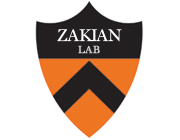Telomeres: structures in need of unwinding.
Publication Year
2010
Type
Journal Article
Abstract
Telomeres protect the ends of eukaryotic chromosomes from being recognized and processed as double strand breaks. In most organisms, telomeric DNA is highly repetitive with a high GC-content. Moreover, the G residues are concentrated in the strand running 3'-5' from the end of the chromosome towards its center. This G-rich strand is extended to form a 3' single-stranded tail that can form unusual secondary structures such as T-loops and G-quadruplex DNA. Both the duplex repeats and the single-stranded G-tail are assembled into stable protein-DNA complexes. The unique architecture, high GC content, and multi-protein association create particularly stable protein-DNA complexes that are a challenge for replication, recombination, and transcription. Helicases utilize the energy of nucleotide hydrolysis to unwind base paired nucleic acids and, in some cases, to displace proteins from them. The telomeric functions of helicases from the RecQ, Pifl, FANCJ, and DNA2 families are reviewed in this article. We summarize data showing that perturbation of their telomere activities can lead to telomere dysfunction and genome instability and in some cases human disease.
Keywords
Journal
FEBS Lett
Volume
584
Issue
17
Pages
3760-72
Date Published
09/2010
ISSN Number
1873-3468
Alternate Journal
FEBS Lett.
PMID
20637196

